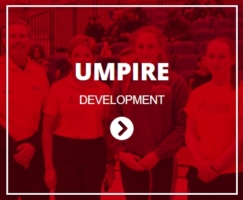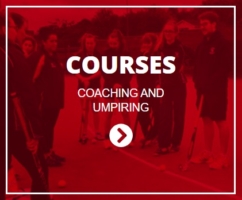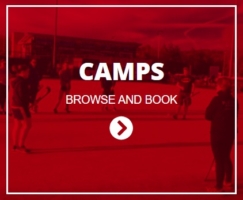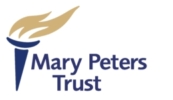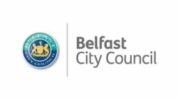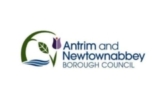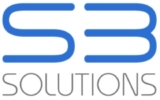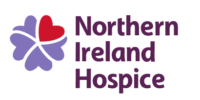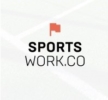COVID GUIDANCE UPDATE – SEPTEMBER 2021
Outdoor Activities – Including matches and training
The maximum number of people who may gather outdoors should be determined by a risk assessment carried out by the person(s) or club responsible for the gathering. The responsible person(s) or club must take all reasonable measures to limit the risk of transmission of the coronavirus. A risk assessment is not required if 30 people or less are attending the outdoor gathering.
In general terms, there are little to no restrictions on numbers participating in hockey training or matches or on the training drills being implemented. We would advise that wherever possible participants should maintain a 1-2 metre distance.
Clubs should continue to have a COVID Officer in place to ensure a responsible approach is taken to ensure the safety and wellbeing of all members and to act as a single point of contact of all COVID related issues.
Track and trace is no longer required for outdoor activities.
Indoor Activities
There is no limit on the number of people that can gather indoors. The maximum number of people that can gather indoors will be determined by a risk assessment that must be carried out by the person responsible for organising or operating the gathering. The responsible person must take all reasonable measures to limit the risk of transmission of the coronavirus. If 15 people or less are to be present then a risk assessment is not required.
In general terms, this means that the numbers allowed to gather indoors will be determined by the risk assessment undertaken of the individual venue.
An appropriate risk assessment is an assessment carried out by the person responsible for organising or operating a gathering for the purpose of identifying and evaluating—
(a) the nature and magnitude of the risk of infection, contamination and transmission of coronavirus arising in the course, or as a result, of the organisation or operation of the gathering; and
(b) measures which are reasonably practicable to take to avoid, mitigate or eliminate those risks including—
- those which prioritise the greatest communal protection;
- those designed to replace practices with less hazardous ones; and
III. the use of clear and concise verbal and written instructions.
The risk assessment should allow for social distancing of 1 metre.
The use of face coverings when moving around indoor venues is recommended.
Track and trace is required for indoor gatherings
Changing & Showering Facilities
We would recommend that clubs continue to avoid the use of changing facilities where possible, and in particular for the home team. However, we understand that a number of teams will be required to travel a distance to away matches or the weather becomes more inclement in the winter months; therefore the use of changing facilities will become essential.
The following document gives a detailed guide on the principles which should be adopted in terms of changing facilities:
Car Sharing
Ulster Hockey would advise that clubs should avoid car sharing wherever possible when travelling to matches or training with individuals from outside of your household. However, if car sharing is unavoidable, please adhere to the following guidance:
Advice on Car Sharing | Sport NI
Spectators
The cap on outdoor gatherings has been removed and the maximum number permitted will be determined by a risk assessment carried out for the venue.
All gatherings, indoors and outdoors will now only be subject to a risk assessment if they have more than 15 participants for indoors, or more than 30 participants for outdoors.
- Spectators attending an event should be advised to consider if they are putting themselves at higher risk because of their general state of health or any other risk factors.
- At sporting venues the risk of transmission of the virus could be increased significantly for spectators for example:- – In congested areas or queues in confined spaces; – Through the touching of hard surfaces; – When sharing food or drink including utensils; and – In crowds where behaviour must be modified to limit the aerosol effect on potential for viral transmission by refraining from shouting, singing or dancing.
- Spectators should be reminded to allow time to enter a venue, refrain from any unnecessary movement around a venue, respect social distancing for other spectators and ‘family bubbles’ and be prepared to comply with the directions and protocols of the Governing Body, club or venue operator.
- Consideration should be given to recommending the wearing of masks especially in indoor areas ie. toilets and in outdoor areas where congestion is likely to develop at certain times.
Venues
- All venues should be subject to a risk assessment prior to an organised sporting event or fixture being held
- The social distancing requirement to be applied for now is 1 meter.
- A crowd management plan should be in place, incorporating the controlled entry and exit of spectators (including staggering entry times), and one-way systems inside the venue to maintain social distancing and minimise the risk of crowd congestion.
- Where possible ticketing/bookings systems should be in place, to assist with social distancing in for example seated venue. This approach will also help manage numbers ie predefined safe capacity.
- Additional hygiene provision, such as hand washing and sanitiser stations, should be in place and well stocked, particularly at entry and exit points to venues and other key points.
- Screens or barriers should be used to separate people from each other when social distancing cannot be maintained particularly at catering and retail outlets, including merchandising and programme sales points.
- Signage and floor markings should be developed both inside and outside sports venues to enforce social distancing, and provide information on seating plans, one[1]way systems and queuing requirements.
- Spectator medical requirements should be considered along with the availability of a Covid isolation room(s).
Symptoms & Positive Tests
Individuals with symptoms of coronavirus (COVID-19), however mild must not attend your club for any reason. Symptomatic individuals must begin self-isolating and book a PCR test. These are widely available and are free.
You should continue to isolate until the result of the test is available. If the result is positive you should continue to self-isolate for 10 full days after the symptoms started. You can end self-isolation 10 days after your symptoms started, as long as you do not still have a high temperature. If you still have a high temperature, you need to continue to self-isolate until your temperature has returned to normal for 48 hours. You do not need to continue self-isolating for more than 10 days if you only have a cough or loss of sense of smell/ taste, as these symptoms can last for several weeks after the infection has gone.
If there is a positive case in my club?
If there is a positive case in a club there is no need to inform track and trace. Track and trace will contact any positive case to identify close contacts and instigate the process from there.
Close contacts of COVID-19
If you’re considered a close contact of someone who has tested positive for COVID-19, self-isolation and testing requirements will depend on whether you’re fully vaccinated, your age and where you work. NI executive guidance should be followed and can be found here:
https://www.nidirect.gov.uk/articles/coronavirus-covid-19-self-isolating
Safe return to hockey following a COVID case.
Once a player has completed a self-isolation period following a positive test for COVID, there remains a risk to their health on returning to physical exertion, particularly where the COVID case has been symptomatic. Sport Northern Ireland has provided the following guidance:
Time-scale for a safe return
Prior to returning to sport or a high level of physical activity, it is expected that the athlete should be symptom-free and should have a period of rest to ensure full resolution of infection, recovery of organ systems and a decrease in infectivity. Due to potential complications, the faculty of sports medicine have published a return to competitive sport following COVID protocol:
It is recommended that an athlete should not play sport for 10 days from onset of symptoms and be at least seven days symptom-free before commencing a 7 day gradual return to sport.
Medical screening and considerations
Before an athlete can return to sport following COVID-19 infection, it would be appropriate to perform a risk assessment to determine the extent of any previous or current infection and to establish the risk of any medical complications. It is widely acknowledged that the rate of medical complications increases with the severity of illness.
An athlete may present to their sports physician following asymptomatic or symptomatic infection. If they are asymptomatic and the infection is identified either on antigen or antibody testing, it would be recommended that they rest at least seven days following the identification of a new infection. If they are presenting with a previous infection (positive antibody test only) and they are training fully with no issues, it is anticipated that they can continue to train without any need for further medical assessment.
Any player returning from symptomatic COVID should apply the following guidance on a graduated return to sport:
Microsoft Word – SNISI RTS in the athlete post COVID 19.docx (sportni.net)


